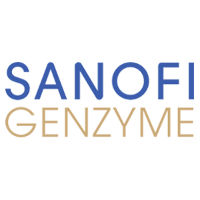预约演示
更新于:2025-05-07
糖基化酶
更新于:2025-05-07
基本信息
别名- |
简介- |
关联
61
项与 糖基化酶 相关的药物靶点 |
作用机制 GBA刺激剂 |
在研适应症 |
非在研适应症 |
最高研发阶段批准上市 |
首次获批国家/地区 韩国 |
首次获批日期2012-10-09 |
靶点 |
作用机制 GBA刺激剂 |
在研机构 |
在研适应症 |
非在研适应症- |
最高研发阶段批准上市 |
首次获批国家/地区 美国 |
首次获批日期2012-05-01 |
靶点 |
作用机制 GBA刺激剂 |
在研机构 |
原研机构 |
非在研适应症- |
最高研发阶段批准上市 |
首次获批国家/地区 美国 |
首次获批日期1994-05-23 |
57
项与 糖基化酶 相关的临床试验NCT06732180
An Open-label Study to Assess the Safety, Tolerability, Pharmacokinetics, and Pharmacodynamics of GT-02287 in Participants With Parkinson's Disease With or Without a Pathogenic GBA1 Mutation
The main goal of this clinical trial is to learn about the safety and tolerability of GT-02287. The questions it aims to answer are:
* What medical problems do participants have when taking GT-02287?
* How is GT-02287 absorbed, distributed, and removed from the body of participants over time (pharmacokinetics)?
* Are there any biological effects of GT-02287 in blood and in cerebrospinal fluid that could be beneficial for people with Parkinson's disease?
Participants will:
* visit the clinic to assess if they qualify for the study (30-day Screening Period)
* if eligible, receive GT-02287 once a day every day for 90 days (90-day Open Label Treatment period)
* visit the clinic the first day of treatment, after the first 2 weeks of treatment, and every month during the 90-day Treatment Period.
* visit the clinic to assess how they are doing 14 days after the end of GT-02287 treatment (14-day Follow-Up Period).
* What medical problems do participants have when taking GT-02287?
* How is GT-02287 absorbed, distributed, and removed from the body of participants over time (pharmacokinetics)?
* Are there any biological effects of GT-02287 in blood and in cerebrospinal fluid that could be beneficial for people with Parkinson's disease?
Participants will:
* visit the clinic to assess if they qualify for the study (30-day Screening Period)
* if eligible, receive GT-02287 once a day every day for 90 days (90-day Open Label Treatment period)
* visit the clinic the first day of treatment, after the first 2 weeks of treatment, and every month during the 90-day Treatment Period.
* visit the clinic to assess how they are doing 14 days after the end of GT-02287 treatment (14-day Follow-Up Period).
开始日期2025-02-21 |
申办/合作机构 |
NCT06528080
A Prospective, Single-center, Open-arm, Single-arm Clinical Study to Evaluate the Safety and Efficacy of a Single Intravenous Infusion of LY-M001 Injection in Adolescents With Type I Gaucher Disease
The purpose of this study was to evaluate the safety, tolerability, efficacy, immunogenicity, PD and PK characteristics of LY-M001 injection in children with GD1 aged 12 years ≤ age < 18 years. This study mainly includes the main study stage and the long-term follow-up study stage.
开始日期2024-08-01 |
申办/合作机构 |
CTR20241092
一项评估LY-M001注射液治疗I型戈谢病成人患者的安全性、耐受性和有效性的多中心、开放、单臂、单次给药、剂量递增和扩展的I/II期临床研究
评价单次静脉输注LY-M001治疗GD1患者的安全性和耐受性,并确定II期研究的推荐剂量(RP2D)
开始日期2024-07-05 |
申办/合作机构 |
100 项与 糖基化酶 相关的临床结果
登录后查看更多信息
100 项与 糖基化酶 相关的转化医学
登录后查看更多信息
0 项与 糖基化酶 相关的专利(医药)
登录后查看更多信息
5,294
项与 糖基化酶 相关的文献(医药)2026-01-01·Neural Regeneration Research
Base and translation of β-glucocerebrosidase and its transporter LIMP-2 in neuropathies
Article
作者: Arnold, Philipp ; Zunke, Friederike
2025-07-01·Water Research
Regeneration of dialysis solution by dual-layer hollow fiber mixed matrix membrane (DLHF-MMM) incorporated with amine-functionalized mesoporous silica nanoparticles
Article
作者: Kim, In S ; Yang, Eunmok ; Nguyen-Thi, Kim-Sinh ; Kim, Soo Wan ; Choi, Heechul ; Le-Thi, Anh-Dao
2025-07-01·Brain Research
Plasma and urinary metabolomic signatures differentiate genetic and idiopathic Parkinson’s disease
Article
作者: Valente, Ana Paula ; Cotrin, Juliana Cordovil ; Spitz, Mariana ; Santos-Rebouças, Cíntia Barros ; de Rosso, Ana Lúcia Zuma ; Cadaxo, André Simões ; Pimentel, Márcia Mattos Gonçalves ; Veras, Renato Peixoto ; Pereira, Joao Santos ; Dos Santos Junior, Gilson Costa
266
项与 糖基化酶 相关的新闻(医药)2025-05-01
·生物谷
Science最新研究解开大脑学习之谜、新研究揭示胆汁酸代谢在骨关节炎中起着关键作用、为什么我们的腰围总是在中年时变粗?Science论文揭示背后秘密
2025年4月份已经结束,4月份Science期刊又有哪些亮点研究值得学习呢?小编对此进行了整理,与各位分享。
1.突触可塑性新发现!Science最新研究解开大脑学习之谜
DOI: 10.1126/science.ads4706
我们如何学会新技能?大脑如何编码新信息?这些问题的答案指向了大脑的突触可塑性——神经元之间连接强度的变化。然而,长期以来,科学家们对大脑在学习过程中如何选择特定突触进行可塑性改变的规则知之甚少。如今,加州大学圣地亚哥分校的研究团队在《Science》杂志上发表了一项突破性研究,揭示了个中奥秘。
研究团队利用先进的双光子成像技术,对小鼠运动皮层中的突触活动进行了实时观测。他们发现,在学习过程中,神经元的不同树突区域遵循着截然不同的突触可塑性规则。具体来说,顶树突的可塑性是由局部突触的协同活动驱动的,而基底树突的可塑性则与神经元的动作电位活动密切相关。这种差异表明,单个神经元在学习过程中同时运用了多种可塑性规则,且这些规则在神经元的不同区域发挥作用。
“这一发现从根本上改变了我们对大脑如何解决‘学分分配问题’的理解。”研究通讯作者Takaki Komiyama教授说道,“我们过去认为突触可塑性在整个大脑内遵循统一的规则,但这项研究表明,单个神经元在不同的亚细胞区域并行执行不同的计算任务。”
2.Science:新研究揭示胆汁酸代谢在骨关节炎中起着关键作用
DOI: 10.1126/science.adt0548
骨关节炎(OA)是影响数千万美国成年人的最常见疾病之一,传统上被认为是一种主要由机械磨损引起的疾病。在一项新的研究中,耶鲁大学骨科与康复学系研究副主任Chuan-Ju Liu博士及其团队揭示了令人信服的证据,表明涉及胆汁酸代谢和胰高血糖素样肽 1(GLP-1)信号传导的肠道-关节轴在骨关节炎的发展过程中起着关键作用。这项研究标志着在理解骨关节炎的代谢基础方面取得了重大进展,为治疗开辟了令人兴奋的新途径。相关研究结果发表在Science杂志上。
肠道菌群-GUDCA-肠道FXR–GLP-1关节通路为骨关节炎提供了潜在的治疗方法
Liu认为,这项新的研究强调了胆汁酸,尤其是甘氨熊去氧胆酸(glycoursodeoxycholic acid, GUDCA),代谢在骨关节炎中的关键作用。他们的临床前研究表明,GUDCA的减少会加速骨关节炎的进展,而补充GUDCA则会减轻这些影响。这种保护作用主要是由于抑制了肠道法尼类固醇 X 受体(farnesoid X receptor, FXR)。
FXR是胆汁酸合成、脂质和葡萄糖代谢的关键调节因子,当它受到抑制时,会增强肠道干细胞的增殖。这导致分泌 GLP-1(一种进入血液并到达关节的激素)的肠内分泌细胞数量增加,从而通过调节产生软骨的软骨细胞和其他关节细胞来防止骨关节炎。
肠道微生物组,尤其是鲍氏梭菌(Clostridium bolteae),在 FXR 信号传导和 GLP-1 调节中发挥着重要作用。Liu 指出,这项研究证实鲍氏梭菌破坏了胆汁酸平衡,影响了 GLP-1 的分泌,并改变了骨关节炎进展。肠道微生物组与关节健康之间的这种错综复杂的联系强调了通过靶向肠道衍生途径治疗骨关节炎的潜力。
3.为什么我们的腰围总是在中年时变粗?Science论文揭示背后秘密:脂肪祖细胞在衰老时大量产生新的脂肪细胞
DOI: 10.1126/science.adj0430
脂肪组织在调节各种激素和代谢过程中起着至关重要的作用,并表现出实质性的成分和表型可塑性。从中年到衰老早期,成年人的内脏脂肪组织质量通常会显著增加。内脏脂肪过多被认为是各种代谢紊乱的重要危险因素。脂肪组织的积累通过两种主要机制发生:脂肪细胞肥大和脂肪生成。然而,早期衰老导致脂肪组织积累的机制仍然知之甚少。
如今,来自希望之城和加州大学洛杉矶分校的一项临床前研究揭示了与年龄相关的腹部脂肪背后的细胞罪魁祸首,为为什么我们的腹部随着中年而变宽提供了新的见解。这一发现也为未来预防腹部松弛和延长健康寿命的疗法提供了一个新的靶点。相关研究结果发表在《Science》杂志上。
脂肪生成有助于与年龄相关的内脏脂肪组织积累
通过与论文共同通讯作者、加州大学洛杉矶分校的Xia Yang博士及其团队合作,Wang及其团队进行了一系列随后在人类细胞上得到过验证的小鼠实验。Wang 和她的同事们专注于白色脂肪组织(WAT),这是与年龄相关的体重增加的脂肪组织。虽然众所周知,脂肪细胞会随着年龄的增长而变大,但是Yang团队和Wang团队猜测白色脂肪组织也会通过产生新的脂肪细胞而膨胀,这意味着它可能具有无限的生长潜力。
为了验证他们的假设,他们专注于脂肪祖细胞(adipocyte progenitor cell,APCs),这是白色脂肪组织中产生脂肪细胞的一个干细胞群体。Wang团队首先将来自年轻和年老小鼠的APC细胞移植到第二组年轻小鼠中。来自年老小鼠的APC细胞迅速产生了大量的脂肪细胞。然而,当他们将年轻小鼠的APC移植到年老小鼠体内时,这些APC细胞并没有产生许多新的脂肪细胞。他们的研究结果证实,无论宿主的年龄如何,较老的APC细胞都有能力独立制造新的脂肪细胞。
4.Science:新突破!阻断癌症中的EPO信号传导可有效根除小鼠体内的肝脏肿瘤
DOI: 10.1126/science.adr3026
在一项新的研究中,斯坦福大学医学中心病理学和医学教授Edgar Engleman医学博士及其团队发现近40年前发现的一种能刺激红细胞生成的蛋白质在抑制免疫系统对癌症的反应方面发挥着令人惊讶的关键作用。相关研究结果发表在Science杂志上。论文第一作者是David Kung Chun Chiu博士。
巨噬细胞中的EPO/EPOR信号介导非炎症性肿瘤免疫型
阻断这种蛋白质的活性会使小鼠以前的免疫耐受性肝脏肿瘤(冷肿瘤)变成充满抗癌免疫细胞的“热”肿瘤。当与进一步激活这些免疫细胞对抗癌症的免疫疗法相结合时,这会导致大多数小鼠的现有肝脏肿瘤完全消退。这些接受治疗的小鼠在实验期间存活。相比之下,对照组小鼠只存活了几周。
Engleman说,“这是我们对癌症免疫系统如何开启和关闭的理解的一个根本性突破。我对这一发现感到非常兴奋,我希望靶向我们发现的这一机制的治疗方法能够迅速进入人体试验。”
尽管这项研究是在小鼠身上完成的,但有强有力的迹象表明,这种称为促红细胞生成素(erythropoietin, EPO)在许多类型的人类癌症中起着类似的作用。
5.Science:挑战常规!新研究揭示一条神经免疫回路介导癌症恶病质中的"冷漠"
DOI: 10.1126/science.adm8857
许多癌症患者在生命即将结束时所经历的疲劳和缺乏动力被视为他们身体健康下降和体重极度减轻的不可避免的后果。但是一项来自华盛顿大学医学院的新研究挑战了这一长期以来的假设,表明这些行为变化源于大脑中特定的炎症感应神经元(inflammation-sensing neuron)。为此,他们确定了癌症相关炎症与晚期癌症中的动机丧失之间的直接联系。相关研究结果发表在Science杂志上。
癌症相关恶病质(cancer-linked cachexia)是一种导致肌肉萎缩和体重减轻的典型疾病。研究人员研究了患有癌症相关恶病质的小鼠,发现了大脑中一种以前未被识别的通路。这条通路感知炎症并积极抑制多巴胺——动机的关键驱动因素,从而导致冷漠和动力丧失。阻断该通路恢复了动力,尽管癌症和体重减轻仍在继续。这表明冷漠可以与癌症本身分开治疗。
论文共同通讯作者、华盛顿大学医学院神经科学教授和精神病学教授Adam Kepecs博士说,“这项研究的意义是深远的。我们发现了一种直接的大脑机制,炎症通过该机制驱动癌症患者的冷漠,我们能够在患有恶病质的小鼠中恢复正常的动机,尽管随着癌症的进展,炎症仍在持续。”
6.帕金森的幕后黑手找到了?Science封面研究解密:帕金森病溶酶体调控枢纽Commander复合体
DOI:10.1126/science.adq6650
你有没有注意到,身边的老年人中,有些人手会不由自主地颤抖,走路时步伐变得缓慢而僵硬,甚至拿筷子夹菜都会显得吃力?这些看似普通的衰老现象,其实可能是帕金森病(Parkinson’s Disease, PD)的早期信号。帕金森病作为一种常见的神经退行性疾病,正在悄悄影响全球超过1000万人的生活。而更令人揪心的是,这种疾病目前无法治愈,患者只能通过药物或手术延缓病情进展。
COMMD3敲除降低溶酶体GCase活性
然而,科学的探索从未停止。近年来,科学家们发现,帕金森病的发病机制与细胞内的“垃圾处理系统”——溶酶体的功能障碍密切相关。而这篇发表在《Science》杂志上的研究,更是揭示了一个令人兴奋的新发现:一个名为COMMD3的基因及其相关的蛋白质复合体,可能是解开帕金森病谜团的关键线索。这篇文章不仅为帕金森病的发病机制提供了全新的视角,还为未来的治疗策略打开了新的大门。
帕金森病的发病机制复杂,目前已知的一个重要风险因素是GBA1基因的突变。GBA1基因编码的是一种名为葡萄糖脑苷脂酶(GCase)的溶酶体酶,它负责分解细胞内的脂质垃圾。如果GBA1基因出了问题,溶酶体的“清洁能力”就会下降,导致垃圾堆积,最终引发神经细胞的死亡。
然而,科学家们发现,GBA1基因突变并不是帕金森病的唯一原因。许多携带GBA1突变的人并没有发病,而一些没有GBA1突变的人却患上了帕金森病。这说明,一定还有其他基因在“帮凶”角色。为了找到这些隐藏的“帮凶”,研究团队采用了CRISPRi基因筛选技术,在全球范围内扫描了数万个基因,试图找出那些能够调节溶酶体功能的关键基因。
7.Science:打破常规!CD8 T细胞启动涉及两个不同的阶段
DOI: 10.1126/science.adq1405
在一项新的研究中,来自维尔茨堡大学马克斯-普朗克系统免疫学研究小组的一个团队发现了免疫反应的一个以前未知的阶段。他们的研究结果挑战了关于T细胞启动(T-cell priming)过程的长期假设。这些新的见解对疫苗和细胞免疫疗法的开发具有重要意义。相关研究结果发表在Science期刊上。
CD8 T细胞启动涉及两个不同的阶段
这个由Wolfgang Kastenmuller和Georg Gasteiger领导的研究团队采用了创新的显微镜技术来观察特定的免疫细胞(称为T细胞)在病毒感染期间是如何被激活和增殖的。他们的发现揭示了新的机制:免疫系统以比以前认为的更有针对性的方式扩增它的防御细胞。
免疫系统面临着一项艰巨的任务,即从极其多样化的T细胞库中迅速识别出能够特异性识别特定病原体的T细胞。这些选定的T细胞然后在“T细胞启动”过程中进行克隆扩增。
论文共同第一作者Deeksha Seetharama解释说,“我们发现T细胞激活不仅涉及一个阶段,还涉及两个不同的阶段。”
论文共同第一作者Katarzyna Jobin详细阐述道,“虽然T细胞启动的第一阶段用于激活一系列特定T细胞,但我们新发现的第二阶段负责选择和特异性扩增能够最有效识别病原体的T细胞。这确保了免疫反应达到最佳效率。”
8.Science:将微生物疫苗与竞争菌株组合使用可有效杀死肠道中的致病菌
DOI: 10.1126/science.adp5011
在一项新的研究中,苏黎世联邦理工学院和牛津大学病理学院的教授Emma Slack与巴塞尔大学生物中心教授Médéric Diard领导的一个国际研究团队展示了如何配制出针对肠道病原体的高效口服疫苗:即不仅要接种疫苗,还要将其与无害细菌结合,这些细菌与致病微生物竞争食物,从而饿死它们。他们在小鼠中证实了这一点。相关研究结果发表在Science杂志上。
通过他们的综合方法,该研究团队不仅能够防止沙门氏菌在小鼠体内定植,而且能够有效地对付已经建立的大肠杆菌。在这两种情况下,接种疫苗或单独使用无害细菌的影响都要小得多。
为了使竞争菌株成功地与致病微生物竞争,至关重要的是它们必须在尽可能相似的条件下生长,即它们必须生活在肠道的同一部分,能够应对相同的酸度和氧气水平,并使用相同的营养物。
该研究团队相应地选择或生产了合适的竞争菌株。在这项研究的框架内,他们在实验室证明,在基因工程的帮助下,有可能产生一种高效的沙门氏菌竞争菌株。不过,如果巧妙地选择和组合天然存在的菌株,这也可以在没有基因工程的情况下完成,正如他们用三种天然存在的大肠杆菌菌株的混合物所证明的那样。
9.Science:雌激素可刺激脑膜Treg细胞产生阿片类物质来抑制疼痛
DOI: 10.1126/science.adq6531
在一项新的研究中,来自加州大学旧金山分校的研究人员发现了一种通过免疫细胞起作用的新机制,并指出了治疗慢性疼痛的不同方法。他们指出,雌激素可以通过使脊髓附近的免疫细胞产生阿片类物质(opioids)来抑制疼痛。这会在疼痛信号到达大脑之前阻止它们。这一发现可能有助于开发治疗慢性疼痛的新方法。这也可能解释为什么一些止痛药对女性比男性更有效,以及为什么绝经后的女性会经历更多的疼痛。相关研究结果发表在Science杂志上。
这项研究揭示了调节性T细胞(Treg)的全新作用,而Treg细胞以减少炎症的能力而闻名。论文第一作者、加州大学旧金山分校博士后Elora Midavaine博士说,“这些细胞受到雌激素和黄体酮的性别依赖性影响,并且与任何免疫功能都无关,这一事实非常不寻常。”
当神经元(通常靠近皮肤)感觉到可能引起疼痛的东西时,这种交流就开始了。然后,这些神经元向脊髓发送信号。Kashem及其团队发现,脊髓下部周围的脑膜含有丰富的Treg细胞。为了了解它们的功能,他们用毒素清除了这些细胞。由此取得的效果是惊人的:没有Treg细胞,雌性小鼠对疼痛变得更加敏感,而雄性小鼠则没有。这种性别特异性差异表明,雌性小鼠更依赖Treg细胞来控制疼痛。Kashem说,“这既令人着迷又令人费解。这实际上让我最初持怀疑态度。”
进一步的实验揭示了Treg细胞与雌激素之间的关系,这是以前没有人见过的:雌激素和黄体酮促使Treg细胞大量产生止痛的脑啡肽(enkephalin)。
10.Science:利用Perturb-multiome方法确定转录因子如何驱动血细胞生长和成熟
DOI: 10.1126/science.ads7951
在一项新的研究中,来自丹娜法伯癌症研究院和波士顿儿童癌症与血液疾病中心的一个研究团队确定了一种新的方法来理解某些称为转录因子的蛋白质如何决定哪些基因程序将驱动血细胞生长和成熟。相关研究结果发表在Science杂志上。
这种称为Perturb-multiome的方法使用CRISPR一次敲除许多血细胞中单个转录因子的功能。然后,研究团队对每个细胞进行单细胞分析,以测量这种基因编辑的效果,包括确定哪些基因开启或关闭,哪些基因是可访问的(基于表观遗传标记)。他们将该工具应用于未成熟的血细胞,以识别重要的转录因子和编码它们的DNA区域,其中这些转录因子和DNA区域强烈影响血细胞的发育。
他们发现,他们确定的许多对驱动血细胞生产很重要的DNA区域也是已知携带与血液疾病相关的突变的区域。他们确定为重要的DNA区域占基因组的不到0.3%,但它们解释了对血细胞特征和特化的不成比例的很大一部分遗传影响。
抗体药物偶联物
2025-04-30
BETHESDA, Md., April 30, 2025 (GLOBE NEWSWIRE) -- Gain Therapeutics, Inc. (Nasdaq: GANX) (“Gain”, or the “Company”), a clinical-stage biotechnology company leading the discovery and development of the next generation of allosteric small molecule therapies, today announced an oral poster presentation at the International Association of Parkinsonism and Related Disorders (IAPRD) 30th World Congress on Parkinson's Disease and Related Disorders, being held May 7th-10th in New York City, NY. Details of the oral and poster presentation are as follows: Presentation Title: GT-02287, A Clinical-stage Allosteric GCase Modulator For The Treatment Of Parkinson’s Disease, Protects Dopaminergic Neurons Against Mitochondrial Toxin MPP+ Presenter: Joanne Taylor, Ph.D., Senior Vice President of Research, Gain Therapeutics Session: Oral Poster Presentation – Guided Poster TourSession Date: Saturday, May 10, 2025Session Time: 8:00-9:00 a.m. EST About GT-02287Gain Therapeutics’ lead drug candidate, GT-02287, is in clinical development for the treatment of Parkinson’s disease (PD) with or without a GBA1 mutation. The orally administered, brain-penetrant small molecule is an allosteric enzyme modulator that restores the function of the lysosomal enzyme glucocerebrosidase (GCase) which becomes misfolded and impaired due to mutations in the GBA1 gene, the most common genetic abnormality associated with PD, or other age-related stress factors. In preclinical models of PD, GT-02287 restored GCase enzymatic function, reduced ER stress, lysosomal and mitochondrial pathology, aggregated α-synuclein, neuroinflammation and neuronal death, as well as plasma neurofilament light chain (NfL) levels, a biomarker of neurodegeneration. In rodent models of both GBA1-PD and idiopathic PD, GT-02287 was shown to rescue deficits in motor function and gait and prevent the development of deficits in complex behaviors such as nesting. Compelling preclinical data in models of both GBA1-PD and idiopathic PD, demonstrating a disease-modifying effect after administration of GT-02287, suggest that GT-02287 may have the potential to slow or stop the progression of Parkinson’s disease. Results from a Phase 1 study of GT-02287 in healthy volunteers demonstrated favorable safety and tolerability, plasma and CNS exposures in the projected therapeutic range, and target engagement with a >50% increase in glucocerebrosidase (GCase) activity among those receiving GT-02287 at clinically relevant doses. GT-02287 is currently being evaluated in a Phase 1b clinical trial for the treatment of Parkinson’s disease with or without a GBA1 mutation. The primary endpoint of the trial, which is currently enrolling participants across 7 sites in Australia, is to evaluate the safety and tolerability of GT-02287 after 3 months of dosing in people with Parkinson’s disease. Gain’s lead program in Parkinson’s disease has been awarded funding support early in its development from The Michael J. Fox Foundation for Parkinson’s Research (MJFF) and The Silverstein Foundation for Parkinson’s with GBA, as well as from the Eurostars-2 joint program with co-funding from the European Union Horizon 2020 research and Innosuisse – Swiss Innovation Agency. About Gain Therapeutics, Inc.Gain Therapeutics, Inc. is a clinical-stage biotechnology company leading the discovery and development of next generation allosteric therapies. Gain’s lead drug candidate, GT-02287 is currently being evaluated for the treatment of Parkinson’s disease with or without a GBA1 mutation in a Phase 1b clinical trial. GT-02287 has further potential in Gaucher’s disease, dementia with Lewy bodies, and Alzheimer’s disease. Gain has multiple undisclosed preclinical assets targeting lysosomal storage disorders, metabolic diseases, and solid tumors. Gain’s unique approach enables the discovery of novel, allosteric small molecule modulators that can restore or disrupt protein function. Deploying its highly advanced Magellan™ platform, Gain is accelerating drug discovery and unlocking novel disease-modifying treatments for untreatable or difficult-to-treat disorders including neurodegenerative diseases, rare genetic disorders and oncology. Forward-Looking StatementsThis release contains “forward-looking statements” made pursuant to the safe harbor provisions of the Private Securities Litigation Reform Act of 1995. These statements are typically preceded by words such as “believes,” “expects,” “anticipates,” “intends,” “will,” “may,” “should,” or similar expressions. These forward-looking statements reflect management’s current knowledge, assumptions, judgment and expectations regarding future performance or events. Although management believes that the expectations reflected in such statements are reasonable, they give no assurance that such expectations will prove to be correct or that those goals will be achieved, and you should be aware that actual results could differ materially from those contained in the forward-looking statements. Forward-looking statements are subject to a number of risks and uncertainties, including, but not limited to, statements regarding: the development of the Company’s current or future product candidates including GT-02287; expectations regarding the timing of results from a Phase 1b clinical study for GT-02287; expectations regarding the timing of patient enrollment for a Phase 1b clinical study for GT-02287; the timing of any submissions to the FDA or other regulatory bodies and agencies; and the potential therapeutic and clinical benefits of the Company’s product candidates. For a further description of the risks and uncertainties that could cause actual results to differ from those expressed in these forward-looking statements, as well as risks relating to the Company’s business in general, please refer to the Company’s Form 10-K for the year ended December 31, 2024. All forward-looking statements are expressly qualified in their entirety by this cautionary notice. You are cautioned not to place undue reliance on any forward-looking statements, which speak only as of the date of this release. We have no obligation, and expressly disclaim any obligation, to update, revise or correct any of the forward-looking statements, whether as a result of new information, future events or otherwise. Investors:Gain Therapeutics, Inc. Apaar Jammu Manager, Investor Relations and Public Relationsajammu@gaintherapeutics.com LifeSci Advisors LLCChuck PadalaManaging Directorchuck@lifesciadvisors.com Media:Russo Partners LLC Nic Johnson and Elio Ambrosionic.johnson@russopartnersllc.comelio.ambrosio@russopartnersllc.com(760) 846-9256
临床1期临床结果
2025-04-29
ARDS诊断标准临床标志是动脉低氧血症和弥漫性放射线不透光。ARDS 的诊断基于以下标准(根据 2024 年修订的柏林 ARDS 定义)急性发作(1 周)胸部 X 光/CT 扫描显示双侧不透光和/或超声显示双侧 B 线和/或实变,不能完全用积液、肺不张或结节/肿块解释。PaO2/FiO2(动脉与吸入氧气)比率≤300或 SpO2/FiO2(脉搏血氧饱和度与吸入氧气)比率 ≤ 315。呼吸衰竭不能完全用心力衰竭或液体超负荷解释。 ARDS分级管理ARDS 根据以下标准分为轻度、中度和重度[2-4]:轻度:200 mm Hg
临床结果放射疗法临床研究
分析
对领域进行一次全面的分析。
登录
或

Eureka LS:
全新生物医药AI Agent 覆盖科研全链路,让突破性发现快人一步
立即开始免费试用!
智慧芽新药情报库是智慧芽专为生命科学人士构建的基于AI的创新药情报平台,助您全方位提升您的研发与决策效率。
立即开始数据试用!
智慧芽新药库数据也通过智慧芽数据服务平台,以API或者数据包形式对外开放,助您更加充分利用智慧芽新药情报信息。
生物序列数据库
生物药研发创新
免费使用
化学结构数据库
小分子化药研发创新
免费使用





